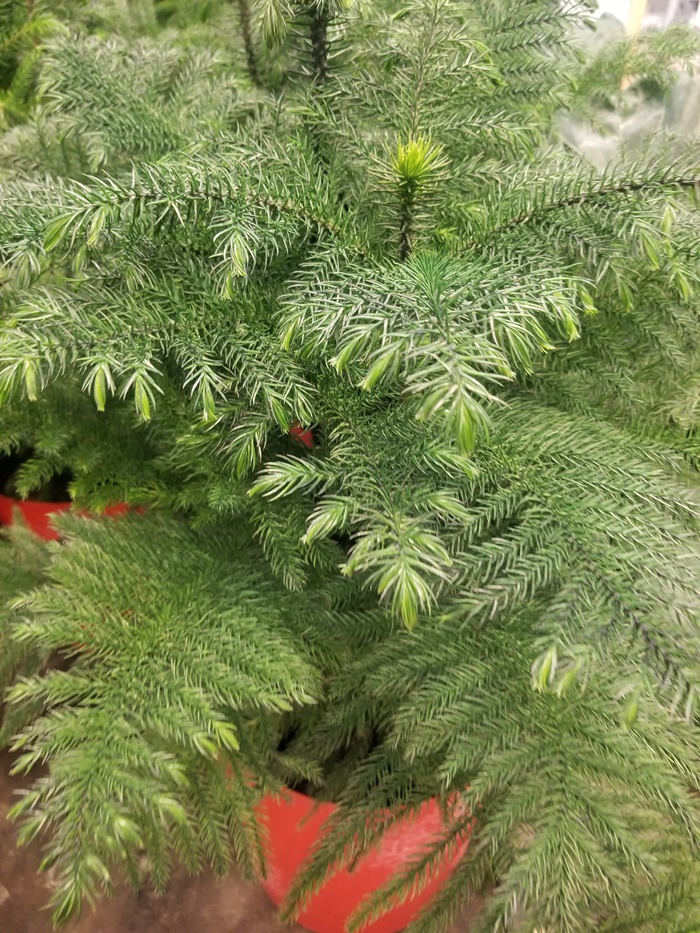Christmas is over, now what do you do with that Norfolk Island Pine you bought at the grocery store, or someone gave you as a gift? Last year my husband made me a gift card tree featuring one of these fun plants so I had to take a crash course in caring for a Norfolk Island Pine Indoors, so I had to do some quick research. Today my friend Sargam has some great tips so you don’t have to search all over to learn to care for your Norfolk Island Pine just read on!

Caring for a Norfolk Island Pine Indoors
Around the holiday season, garden centers, home improvement stores, and grocery stores stock up on delicate feathery-leaved Norfolk Island Pines.
These tropical beauties are not only a great festive tree but also a lovely houseplant. With a little bit of care, you can enjoy your Norfolk Island Pine year after year.
Holiday Tip: Use lightweight ornaments on this evergreen and avoid using lights that could heat up and burn the foliage.
What is the Norfolk Island Pine?
The roots of this plant can be traced back to the “Araucariaceae” species of pine-like conifers.
Fun Fact: The Araucariaceae plant is named after the ‘Arauco’ district in Chile.
The Norfolk Island Pine is one of the twenty species of Araucariaceae; as the name suggests, it comes from the Norfolk Island, in the external territory of Australia.
Fun Fact: This plant was named by Captain James Cook when he discovered this Norfolk island in 1774.
Most of the plants available for sale in the United States come from Florida or Hawaii.
Outdoors, these trees can grow to a majestic 200 ft, but as houseplants, they slowly grow to about six feet.
How to help the Norfolk Island Pine thrive indoors?
Norfolk Island Pines are easy to care for, relatively pest-resistant, low-fuss plants. They prefer a bright spot near a window, away from drafts and direct sunlight.
Grow Tip: Turn your plant a quarter every couple of days to encourage upright growth.
During warmer months, you can place your pine outdoors in a partly shaded spot.
They do not like to dry out and prefer regular waterings, however, be wary of overwatering.
Grow Tip: Place them in a room that has a humidifier to prevent leaves from drying out.
They tend to grow slowly and usually need to be repotted once every couple of years. They prefer rocky soil that drains quickly.
Grow Tip: Make your own potting mix using 1 part indoor potting soil and 1 part peat-moss or pearlite.
This plant is one of the few indoor plants that thrive with little to no additional fertilizer. If you plan on fertilizing, the best time to add fertilizer is when the plant is pushing out new growth. A 20-20-20 water-soluble fertilizer once a year should be adequate.
Highlights
Light- Away from direct sunlight (within six feet of a south-facing window)
Moisture – Humid air (about 50%), moist soil, never soaking wet or bone dry.
Soil- Well draining mix.
Fertilizer- 20-20-20 during periods of growth.
What are the common problems with Norfolk Island Pines?
Low humidity, low light, or wet feet can cause the plant to drop its branches. If you notice bottom branches bowing, check the soil with a moisture meter, ensure humidity levels are at 50% and move your plant to a location that will allow it to get 12 hours of light a day.
We hope these tips will help you enjoy your holiday time pine for a long time.
By Sargam Merchant
For Home and Travel Cafe by Linette.

 Follow
Follow